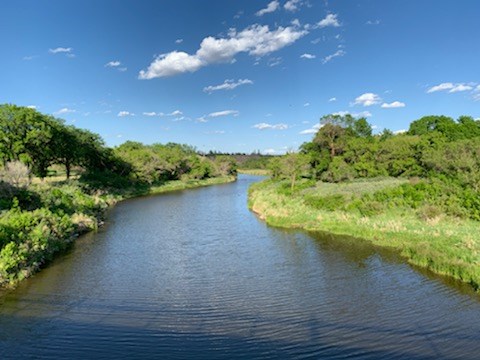City hall plans to pursue provincial funding to help support a $200,000 project that would assess existing flood mitigation infrastructure with Spring Creek and the systems that support it.
During its June 12 regular meeting, city council voted unanimously to approve the funding application to the Water Security Agency’s (WSA) Flood Damage Reduction Program for the Spring Creek hydraulic and condition analysis project.
Further, council agreed that the municipality would meet the related legislated standards and WSA’s terms and conditions, conduct an open tendering process, manage the project, fund the project’s municipal share, fund ongoing operation and maintenance costs and follow federal and provincial mitigation measures.
The analysis could provide the city with options to upgrade the system, with work possibly starting in 2024 or 2025.
City hall budgeted $1.405 million this year to address storm sewer infrastructure, including $200,000 for major (overland) systems and $1.205 million for minor (storm pipes and networks) systems, a council report explained.
This project is expected to cost $200,000, while WSA’s funding program would provide a maximum of $100,000 or 50 per cent through a cost-sharing initiative.
The community is located at the confluence of three major watersheds — the Moose Jaw River, Thunder Creek and Spring Creek — with the latter flowing through the northern part of the city, the report said.
Thunder Creek runs west to east through the Canadian Pacific Rail valley area, while both creeks connect to the river on the city’s east side.
In 1974, the largest recorded flood in Moose Jaw history inundated low-lying areas and caused major property damage, resulting in a flood plain management policy and an accompanying flood disaster mitigation plan, said the report.
A major part of this mitigation plan saw Spring Creek re-routed from the east-central side of the river to beyond Highway 1 and the landfill.
Furthermore, diverting the creek became possible through a large channel and dyke system that starts at Happy Valley and continues east of Ninth Avenue Northeast. Designers created the dyke to withstand a one-in-500-year flood, while the city now controls water flows by a valve near Sixth Avenue Northeast and Hall Street East.
However, the city has expanded during the past 50 years to include Sunningdale, Iron Bridge and West Park, which have all dramatically changed the storm flow inputs into Spring Creek, the report added.
This project is divided into two parts, according to the council report.
The first part will focus on Spring Creek as it flows east through city limits, starting west of Thatcher Drive and exiting at the landfill.
The work will review flood mapping models, assess and recommend updates to existing storm infrastructure — such as culverts — along the creek, create a channel maintenance plan, review existing channel vegetation, and develop emergency response considerations for one-in-100-year and one-in-500-year storms.
The second part will focus on assessing and recommending refurbishment, resizing existing overland and underground storm infrastructure, and developing alternate alignments to avoid buildings or new construction.
There are alignment issues with the pipes since the storm sewer routes through residential streets and alleys before entering Crescent Park at Second Avenue Northeast and Athabasca Street East, the report said. The water moves overland through the Serpentine before eventually exiting through a small tributary near Fourth Avenue Northeast and Fairford Street East.
However, any infrastructure changes would not improve the water quality in Crescent Park’s Serpentine because the project focuses on upgrading pipes.
The next regular council meeting is Monday, June 26.


.png;w=120;h=80;mode=crop)

